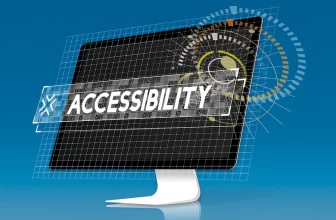
The advancements in digital tech across the globe have defined the modern era. One such advancement is in the field of web development. Almost every business now has a website and tends to its users through it.
However, users require various features that improve their user experience. A major example is a file uploader. Based on how you look at it, there are different uses for a file uploader. Some people use a file uploader to upload sensitive documents, while others use it to upload images to social media platforms.
Now, I agree that the “best file uploader” depends on the needs of an individual. This is why different people have different picks as the best. The tools that make the UX design pleasant automatically climb the list of the best.
In today’s guide, we’ll examine the foundational qualities of a good file uploader and how these features affect user experience. This will help us determine which file upload solutions are actually worth having. So, are you ready to dive into these advanced features and know which tools are the most useful for you as a developer?
Feature Checklist: What Makes A File Uploader Strong?

The simplest qualifying feature of a good file uploader is the features it has. These capabilities can greatly enhance or worsen the user experience. Here’s a full checklist of these features:
Intuitive interface
First things first, a good file uploader must have an intuitive file upload UI. Simple drag-and-drop options make it highly desirable for end-users and developers alike. Why? Because it allows an easy way to upload files without annoying processes. Moreover, a simple “browse” button can go a long way in reducing frustration and improving productivity. The design should be a seamless journey, not a track with hurdles.
Broad file support
A good file uploader should be capable of handling various types of files. This allows it to provide value to a larger number of users worldwide. Some common file types include image and video formats, PDFs, and documents. These commonly used file types require a file uploader that can handle all of them easily and make the UX smoother. Industries that run on such daily tasks often have individuals that are appreciative of such easy-to-use features.
Real-time progress indicators
Users love to be in the know. After all, everyone wants to know where they stand in every aspect of their life. This helps them plan the next steps accordingly. The same applies to users when it comes to uploading. Visual indicators, such as a progress bar, inform them of the progress and keep them engaged. This improves the user experience and results in a higher user engagement score. Ultimately, this results in better SEO and revenue for the business as well.
Flexible input sources
Modern users expect flexibility in how they can upload files. It is a must-have at this point. The uploader must be capable of supporting multiple input sources. These can include direct uploads from the device or integrating with cloud services and social media platforms. All this just adds to the user’s convenience, and that’s what we’re looking for. This opens up the diversity of usage of these tools as well.
Preview capability
A preview capability is essential for tools that handle multiple uploads. Users like to confirm what they are uploading. This helps them avoid any mistakes. This is especially important in the corporate world, where one wrong document can turn a client off. In a way, this also gives the user an assurance that they are doing things right.
These features are what you can call “vital” for a good file uploader. It’s not about one of these things; it’s about all of them combined. If your file uploader has any of these missing, you can’t perform your tasks as efficiently. This checklist directly correlates to a good user experience and determines the best file uploader for any user.
User experience (UX) essentials

There are certain key determinants at its core when it comes to enhancing user experience. One such ubiquitous feature is the level of user experience it provides. Here are key UX essentials every file uploader should have:
Responsiveness
Quick, responsive interactions are crucial for a positive user experience. Users don’t care about network conditions or file size. They just want immediate feedback while uploading. A good file uploader has this covered. It’s fast, responsive, and greatly improves the user experience.
Accessibility
Accessibility is a fundamental aspect of UX design for file upload solutions. Users can be of diverse abilities, including those who require assistive technologies. The file uploader must be easily accessible for them as well. This automatically increases the number of active users and brings in more traffic.
Meaningful error handling
Clear and helpful error-handling messages are invaluable when issues arise. The file uploader should directly convey an error to the user if it comes up. Users don’t want to second-guess anything. They require instant feedback on how to resolve these issues. Naturally, reduced user frustration automatically results in a better user experience.
Graceful degradation
The file uploader must remain functional even if JavaScript’s advanced features are unavailable. This graceful degradation and basic level of functionality ensures users don’t get frustrated. Moreover, it allows users from older browsers to still upload files and gives a positive user engagement score.
Security as a forethought
Security is at the top of the priority list when it comes to any online tools. File uploaders are no different. These uploaders often handle sensitive and confidential data, which could be costly if lost or mismanaged. It’s incumbent they have secure connections, like HTTPS, and secure design features. These measures help build user trust and improve UX.
Beyond the basics: Features that delight
Let’s go beyond the basics, shall we? Here are some features that put a file uploader far above the rest:
- Batch Uploads: Allows users to upload multiple files simultaneously, increasing efficiency.
- In-uploader Editing Options: Features like image cropping, rotation, and format adjustments that can be done directly within the uploader.
- Resume Upload Capability: Enables the continuation of file uploads after an interruption, preventing the loss of progress.
- Automatic File Compression: Reduces file sizes before uploading to save time and bandwidth.
- File Type Filtering: Restricts or filters uploads to specific file types for consistency and security.
- Custom Metadata Inputs: Allows users to add metadata like tags or descriptions during the upload process.
- Real-Time Validation: Checks files for issues (like size or format mismatches) before uploading to prevent errors.
- Cloud Integration: Offers options to upload directly to cloud services like Google Drive or Dropbox for easy file management and sharing.
Conclusion
While advanced features certainly are a bonus, they do not define the best file uploader. The true superiority lies in the basics. These include UX design clarity, security, efficiency, and responsiveness. These features are directly responsible for impacting user experience, hence their first priority.
In this guide, we have learned about the essential features of a file uploader and how these features can influence user experience. Some of these include intuitive file upload UI, swift upload speeds, and comprehensive visual feedback. If the tool has these, it’s already a good tool in the users’ eyes. Advanced features like cloud storage integration and file compression are the cherry on top.
More Resources:






